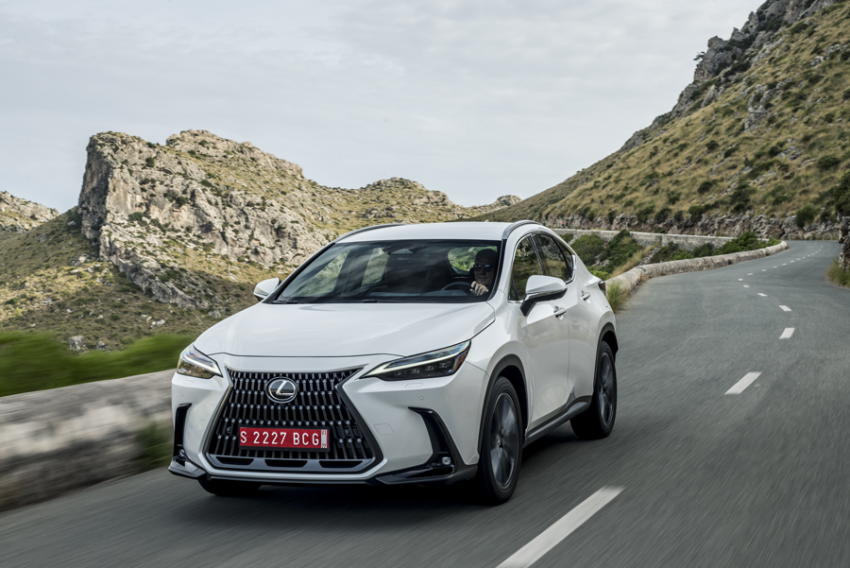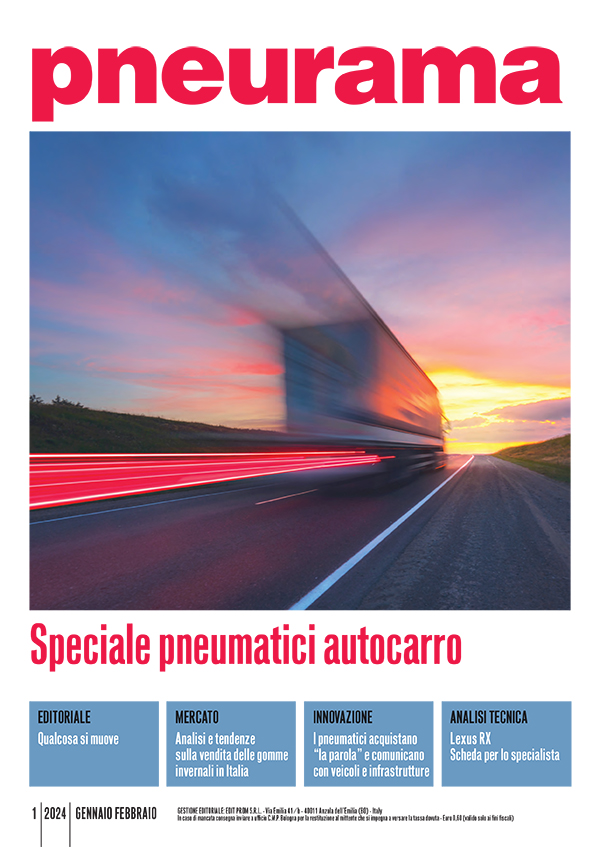Following a profound upgrade, here is a mid-range sport utility vehicle as Toyota understands it. With the luxury brand Lexus, the Japanese Group has in fact targeted the most demanding customers with the NX, a rather dull acronym behind which lies a multifaceted and refined model. Now almost ten years old, making its debut in in 2014 and restyled in 2018 and upgraded in terms of equipment and powertrains with this second series, the NX is the Lexus model that we are most likely to see going into the workshop for a tire change, as it accounts for around a third of all Lexus sold in Europe. Thus, the brand's mission as a leader is clear, confirming that oriental philosophy known as 'functional beauty' that has characterised the range since the beginning.
Tradition in new clothing
No extreme aesthetic changes here, although around 95 per cent of the NX's components have been redesigned and optimised. The model is recognisable at first glance in the thicket of SUVs crowding the market, thanks to a front end with a vertical wide-open hourglass grille to improve the air flow and new light clusters with a sharp, modular light signature, thanks to intelligent bi-led Adaptive High-beam System technology. The sharp front design gives a decidedly sporty appearance, underlined by large wheel arches, suitable for 18- to 20-inch wheels, and tires ranging between 720 and 740 mm in diameter. Lower, longer and wider (4.66 x 1.87 m) and with a wheelbase increased to 2.69 metres, Lexus' mid-size SUV redefines and upgrades a familiar look with a touch of extreme. The peppery NX F Sport More, in fact, offers greater punch and performance, thanks in part to new stylistic and functional elements such as larger air intakes, dark chrome details and exclusive 20-inch 10-spoke alloy wheels, similar in design to the wheels already featured on the flagship Lexus LC. While external changes are limited to a few functional elements, the new generation NX evolves significantly on the inside, with revamped interiors that feature the latest technological solutions which the Japanese, true to their ancestral philosophies, called 'Tazuna concept', i.e. easily accessible control switches to ensure the hands are always firmly on the steering wheel and information available at a glance, maximising driver control and connection with the vehicle. Indeed, through voice commands, touchscreens and touch buttons, the driver has complete control over every aspect of life on board while the hands are always on the steering wheel, thanks to limited hand and eye movements, as well as the acoustic response of on-board systems through Hey Lexus voice assistance.
At the heart of the system is the new Lexus Link Connect, with a large 9.6-inch central display in its basic configuration, which expends to 14 inches (among the largest in its category) in the top-of-the-range Lexus Link Pro. The high standards of comfort and versatility are the result of state-of-the-art solutions. These include door opening via an e-latch push-button system that replaces the traditional door handle, or the S-Flow zone climate control able to detects the presence or absence of passengers and adjusts accordingly, taking into account the set parameters and external conditions, including sunlight. The Lexus Safety System + active driver assistance package is decidedly hi-tech, with a multitude of standard devises that includes Lane keeping, Safety distance and Lane Departure and Trace Lane Assist, Emergency Steering and Pre Collision System, as well as an optional Extended Safety Package, with lane-change, acceleration and deceleration assistance, in-coming traffic alert - with animation on the head-up display in front of the driver - and Adaptive Cruise Control, which adjusts speed according to curves and traffic. No problem with parking either, even in tight spaces, thanks to Advanced Parking assistance, enhanced by a Remote Parking function that can be managed even outside the vehicle from a smartphone via the Lexus Link app. The electric tailgate gives access to a 545 litres baggage space which expands to 1436 litres with the back seats folded and can be set to limit the opening height so as not to hit a low garage ceiling.
The difference in a plug
There are two versions on the catalogue, now badged 350h or 450h+, dictated by the different approach desired by Lexus to satisfy the driver’s needs in terms of extended mobility. That is, a fourth-generation mild hybrid for the former, and plug-in hybrid for the latter, a plug-in solution making its first appearance on a Lexus. This means having the extra boost offered by the additional electric motor, or benefiting from a greater energy reserve with the battery pack that can be recharged from an electric socket, to be able to travel in zero-emission mode over longer distances. The in-line four-cylinder 2.5-litre Atkinson cycle unit (extended stroke and variable valve timing VTT-i), delivering 185 or 190 hp depending on the version, is aided by a front electric motor with 182 hp, plus a second one, only for the 4WD E-Four versions, at the rear with 54 hp. This gives the NX a combined power output of 244 bhp on the 350h and up to 309 bhp overall on the 450h+, guaranteeing 0-100 km/h acceleration in 6.3 seconds (7.7 sec on the 350h), top speed limited for both to 200 km/h, while maintaining emissions between 20 and 26 g/km of CO2 and fuel consumption, in the best of conditions, between 0.9 and 1.1 litres/100 km. While on the entry level the battery pack is rather small, on the top of the range model the lithium-ion accumulators reach 6.6 kW of power, 96 cells with a total voltage of 355 volts, rechargeable via plug-in in about 2.5 hours through a 32 A connection. The possibility of driving in EV mode alone thus guarantees a maximum speed of 135 km/h and an urban range of close to 100 km. The transmission, with either front-wheel drive or permanent all-wheel drive, is handled by a six-speed Shiftmatic sequential automatic transmission with paddle shifts on the steering wheel, which can be selected from four different response combinations depending on the type of driving style desired. Built on the GA-K platform shared by Toyota and Lexus for the group's mid and top of the range cars, sedans and sport utilities with front or all-wheel drive, the current NX is 30% stiffer than its predecessor, 20 mm lower with an optimised weight distribution between the two axles, making it easier to handle even in extreme conditions. To achieve this, the steering wheel with electric power assistance on the pinion is even more direct and precise, while the braking system relies on four generously sized ventilated discs, 328 mm at the front with floating twin-piston callipers. Two size options are possible for the tires, with 235/60 R18 or 235/50 R20 mounted on alloy wheels, with dedicated wheels for the F Sport.


